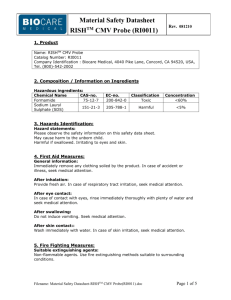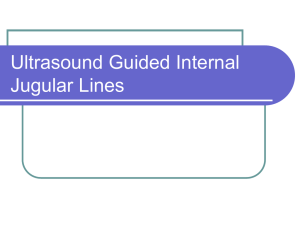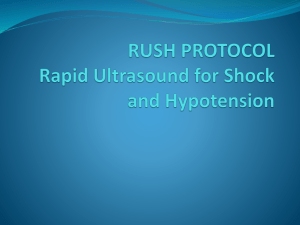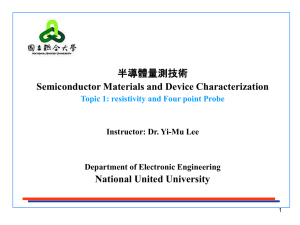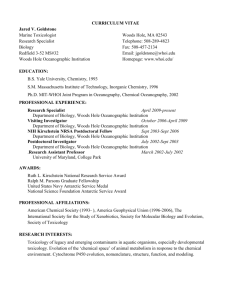CERQUAL
advertisement
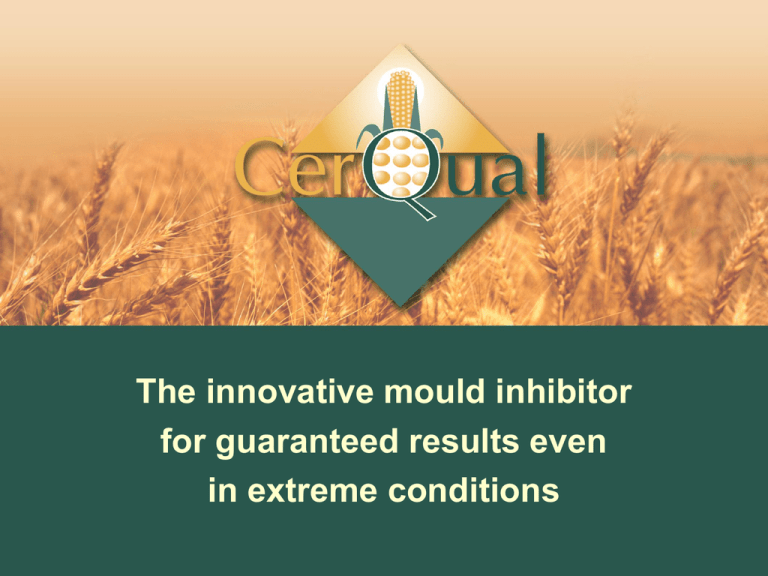
The innovative mould inhibitor for guaranteed results even in extreme conditions Name of the European Project: “REAL TIME METHODOLOGIES FOR THE PREDICTION AND CONTROL OF FUNGAL CONTAMINATIONS, IN FEED STUFFS” • Complutense University Of Madrid (Spain)- Faculty of Veterinary Medicine – Dept. Of Toxicology – prof. A. Anadon • Catholic University of Piacenza (Italy) – Faculty of Agronomics – Dept. Of Animal Nutrition – Prof. G.Piva • Institute Nacional Reseaches Appliqueés (INRA) de Tulose (France) – Dept.of Moulds & Fungi – prof.J.Le Bars • Dox-al Italia spa – Italy • Dox-al Iberica SA – Spain • Dox-al France SA- France N. 2 MINISILOS Probes Positioning Silo “A” Silo “B” 1- probe 0-1 (regolabile) 6- probe 10-11 (adjustable) 2- probe 2-3 (south side) 7- probe 12-13 (south side) 3 probe 4-5 (north side) 8 probe14-15 (north side) 4 probe 6-7 9 probe 16-17 5 probe 8-9 10 probe 18-19 External probes 21 (A)/26(B) north side External probes 23(A)/27(B) south side External Ambient temperature probe Sampling point (product/CO2) Probe entrance point X-ray irradiation Proyect Ref. AIR 3-CT94-1325 Partecipant : UNIVERSIDAD COMPLUTENSE DE MADRID FACULTAD DE VETERINARIA CATEDRA DE TOXICOLOGIA Y LEGISLACION SANITARIA Resercher in charge: Prof.Dr. Arturo Anadòn SUMMARY OF TECHNICAL REPORTS Task C 6.1: Toxicity testing: Studies in vivo/in vitro with hepatocytes for cytotoxicity detection of several mycostatic agents and/or mycotoxins Task C 6.1.1.: Toxicity testing: Studies in vitro with hepatocytes for cytotoxicity detection of a potential mycostatic agent, 8quinolinol sulfate Task C 6.2: Toxicity testing: In vivo and in vitgro assessment of enzymatic induction in experimental animals Task C 6.2.1: Toxicity testing Effect of the mycotoxin Fumonisin B1 on rat hepatic microsomal cytochrome P450 system and peroxisomal enzymes Task C 6.2.2: Toxicity testing: effect of the mycostatic agents chloramine-T (PE3-3) and natamycin on rat hepatic microsomal cytochrome P450 system and perozisomal enzymes. Task C 6.1.1: Toxicity testing: Studies in vitro with hepatocytes for cytotoxicity detection of a potential mycostatic agent, 8-quinolinol sulfate 1. 2. Introduction Material and methods 2.1 Animal protocol and experimental desigh 2.2 Cytotoxicity assays 2.2.1 Lactate dehydrogenase release 2.2.2 MTT reduction assay 2.2.3 Glutathione assay 2.3. Data analysis 3. Results and conclusions Task C 6.2: Toxicity testing: In vivo and in vitgro assessment of enzymatic induction in experimental animals Task C 6.2.1: Toxicity testing Effect of the mycotoxin Fumonisin B1 on rat hepatic microsomal cytochrome P450 system and peroxisomal enzymes 1. Introduction 2. Material and methods 2.1 Treatment of animals 2.2 Enzyme assays and biochemical determinations 3. Results and conclusions Task C 6.2.2: Toxicity testing: effect of the mycostatic agents chloramine-T (PE3-3) and natamycin on rat hepatic microsomal cytochrome P450 system and perozisomal enzymes. 1. Introduction 2. Material and methods 2.1 Treatment of animals 2.2 Enzyme assays and biochemical determinations 3. Results and conclusions the identification of Aspergillus glaucus as the harmless “pioneer”, which increased level can be used as an alarming signal the ergosterole presence as a marker for a rapid quantitative determination of moulds ERGOSTEROLE CONTENT OF MAIN FEED INGREDIENTS Name Average content (mg/kg Good quality (mg/kg) Risky quality( mg/kg) Name Average content (mg/kg Good quality (mg/kg) Risky quality(m g/kg) Corn 3.9 <3 >8 Peas 1.1 <2 >4 Sorghum 5.8 <8 >12 Rapeseed 9.5 <15 >20 Wheat 5.9 <8 >12 Manioca 28.3 <30 >50 Barley 8.4 <9 >14 Soyabean meal 1.4 <3 >4 Rye 6.6 <8 >12 Triticale 7.3 <8 >12 Peanut meal 3.4 <6 >9 Wheat meal 4.2 <5 >10 Sunflower meal 3.8 <6 >9 Wheat bran 9.9 <10 >15 Copra 12.1 <15 >20 Corn meal 4.0 >8 Cotton seed 31.7 <35 >50 Corn feed 24.4 <25 >35 Citrus pulp 3.0 <5 >8 Corn gluten feed 40.8 <50 >70 Molasses 2.9 <4 Corn distiller 46.0 <50 >70 Dried alfalfa 35.0 <50 Corn solubles 36.4 <50 >70 Straw granules 124.8 <130 Lupins 0.5 <2 >4 >80 a clearer spectrum of activity of each traditional organic acid the identification of the role of • sulphur • ammonium • chlorine the discovery of new molecules able to actively stop mould proliferation A FEW FACTORS INFLUENCING FEED PRESERVATION TIME ASPECT: pellet process increases the preservation time 2 folds compared to mash form TEMPERATURE: an increase of 5°C in storage decreases the preservation time 2 folds WATER CONTENT: an increase of 0.5% of water content decreases the preservation time 2 folds MOULD CONTAMINATION: an increase of 2 Log of mould population decreases the preservation time 2 folds TEMPERATURE VARIATIONS: a delta of more than 10°C inside a silo, triggers water migration PROTECTION FACTOR (PF) is an index indicating the ability of a substance to prolong feed shelf life PROTECTION FACTORS OF SOME SUBSTANCES: PROPIONIC ACID SODIUM PROPIONATE SORBIC ACID POTASSIUM SORBATE CITRIC ACID BENZOIC ACID 2.15 2.02 1.38 1.41 0.97 1.00 PROTECTION FACTOR CERQUAL: 3 PROTECTION FACTOR Cerqual PF is higher than the PF of each one of its ingredients: SYNERGY COMPOSITION AMMONIUM ACETATE • SULPHUR • CHLORINE ACETIC ACID • PROPIONIC ACID HYDROXY Ca – Al – Mg SILICATE Cerqual doesn’t contain any excipient DOSAGE Cerqual dose depends on: • STORAGE TEMPERATURE • STORAGE LENGTH • MOISTURE CONTENT To tailor Cerqual dosage to your own needings, ask for the SMART CHART SMART CHART



